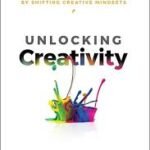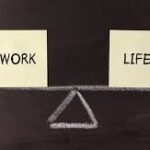Introduction:
Communication is the cornerstone of human interaction and plays a vital role in personal and professional relationships. Mastering the art of effective communication is a skill that can positively impact all aspects of your life. In this article, we will explore timeless tips for connecting with others through communication. Whether you’re looking to enhance your interpersonal skills, improve teamwork, or become a more persuasive communicator, these techniques will empower you to build meaningful connections and foster understanding.
- Active Listening:
Effective communication begins with active listening. Give your full attention to the speaker, maintain eye contact, and avoid distractions. Show genuine interest by nodding, using verbal cues, and summarizing or paraphrasing their points. By actively listening, you demonstrate respect and understanding, fostering a deeper connection with the speaker. - Clear and Concise Expression:
To ensure your message is understood, practice clear and concise expression. Use simple language, avoid jargon or technical terms when communicating with non-experts, and structure your thoughts logically. Be mindful of your tone, speaking at a moderate pace, and using appropriate gestures and body language to convey your message effectively. - Empathy and Understanding:
Developing empathy is crucial for effective communication. Put yourself in the other person’s shoes, consider their perspective, and validate their feelings. Show understanding and empathy by acknowledging their emotions and experiences. This creates a safe and trusting environment for open dialogue and fosters stronger connections. - Non-Verbal Communication:
Non-verbal cues can often convey more than words alone. Pay attention to your body language, facial expressions, and gestures, as well as those of the person you’re communicating with. Maintain an open posture, smile genuinely, and use appropriate hand movements to enhance your message. Non-verbal cues can greatly impact how your communication is received. - Clarification and Feedback:
Misunderstandings can occur during communication, so it’s essential to clarify and provide feedback. Ask open-ended questions to ensure you fully comprehend the speaker’s message. Summarize or rephrase what you’ve understood to confirm your understanding. Similarly, encourage others to seek clarification or provide feedback, creating a collaborative and interactive conversation. - Mindful and Respectful Communication:
Practice mindful and respectful communication by being aware of your words and their potential impact. Avoid interrupting others, be patient, and wait for your turn to speak. Use inclusive language, refrain from personal attacks or judgment, and treat others with respect and dignity. By fostering a positive and respectful atmosphere, you encourage open and honest communication. - Practice and Adaptability:
Effective communication is a skill that improves with practice. Seek opportunities to engage in various communication settings, such as public speaking, group discussions, or written correspondence. Pay attention to the feedback you receive and adapt your communication style to different audiences and contexts. Flexibility and adaptability are key to connecting with diverse individuals and situations.
Conclusion:
Mastering the art of effective communication is a lifelong journey that requires self-awareness, empathy, and practice. By implementing these timeless tips for connecting with others, you can enhance your communication skills and build stronger relationships. Whether in personal or professional settings, effective communication will empower you to express yourself clearly, understand others better, and foster meaningful connections that stand the test of time.




